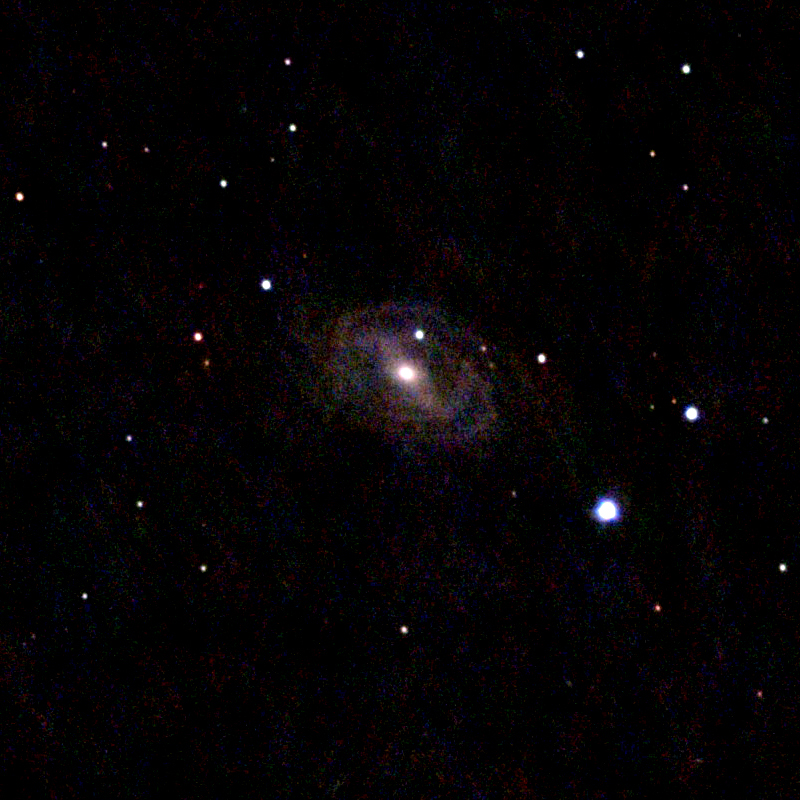M109

Credits: Keith Turnecliff, Nerja, Spain
Messier 109 (M109) is a barred spiral galaxy located in the constellation Ursa Major.
The galaxy lies at a distance of 83.5 million light years and has an apparent magnitude of 10.6. It has the designation NGC 3992 in the New General Catalogue.
Messier 109 occupies an area of 7.6 by 4.7 arc minutes of apparent sky, corresponding to a linear diameter of 180,000 light years.
The galaxy can be seen in large binoculars in exceptionally good conditions.
4-inch telescopes show a hazy streak of light, while 6-inch instruments reveal the galaxy’s nucleus surrounded by nebulosity.
Only the galaxy’s bright central region with the bar can be seen visually.
Messier 109 is located only 40 arc minutes southeast of the magnitude 2.44 star Phecda, Gamma Ursae Majoris, the star marking the bowl of the Big Dipper toward the handle.
Messier 109 contains an estimated 1 trillion stars. It is the brightest member of the M109 Group, a group of 79 galaxies in Ursa Major.
It has three known satellite galaxies: NGC 6923, NGC 6940 and NGC 6969.
Facts about M109 by Keith Turnecliff
Messier 109 was probably discovered by Charles Messier in the spring of 1781 while checking the position of two objects discovered by Pierre Méchain,
who had found three objects in this region of the sky. Messier only determined the position for M97, the Owl Nebula, and mentioned the other two in his description.
He added M109 to his personal copy of the catalogue in 1783, describing it as a “nebula near Gamma UMa, same right ascension a bit near this star and 1 deg… more south.
Discovered by M. Méchain on March 12, 1781.”
The best time of year to observe M109 is during the spring.

Credits: Image courtesy of Starry Night Pro Plus 8, researched and implemented by Keith Turnecliff.